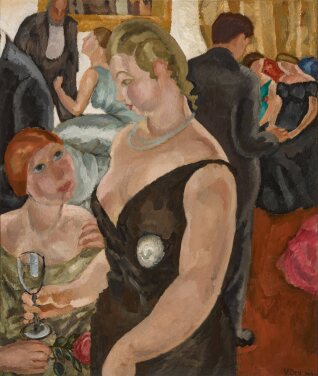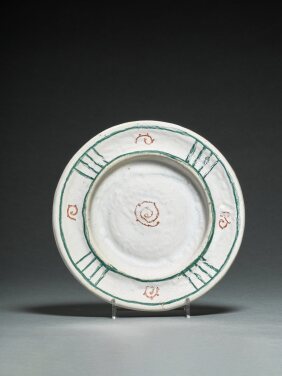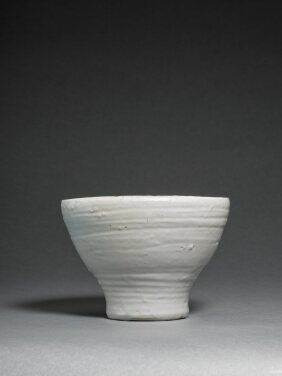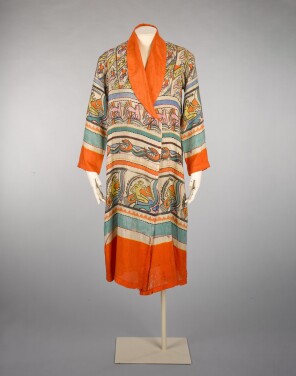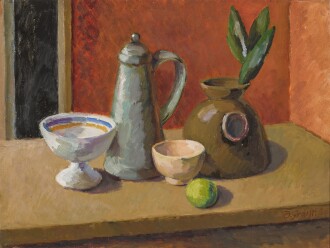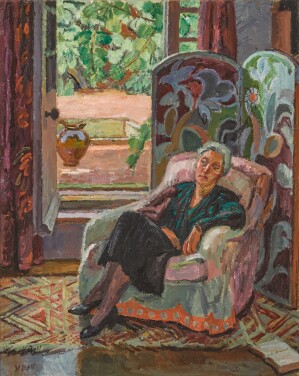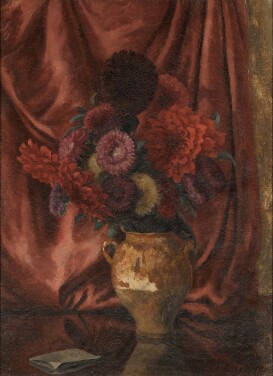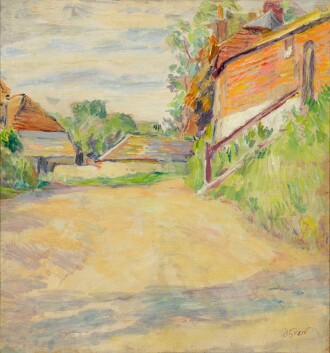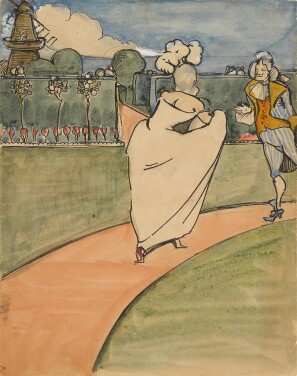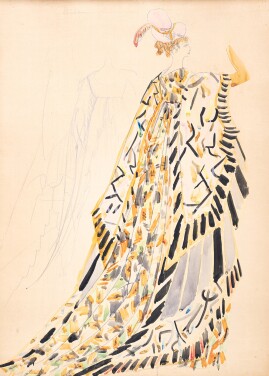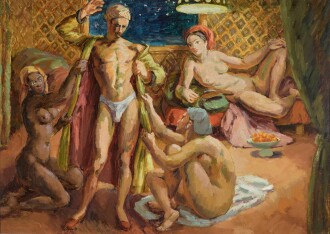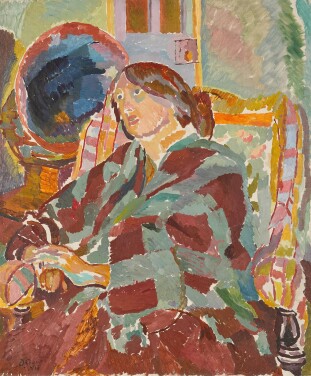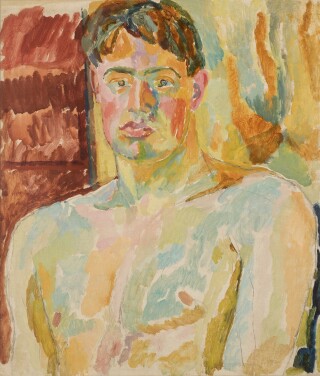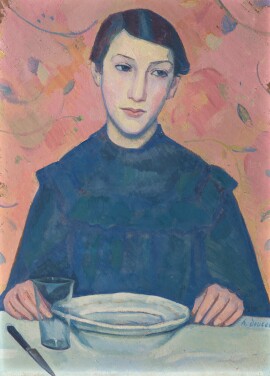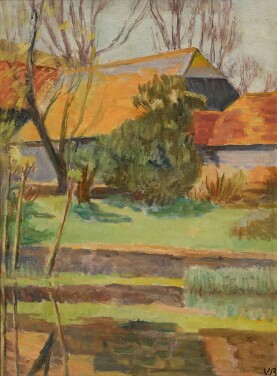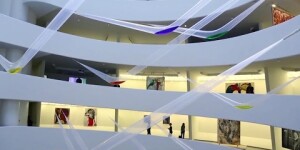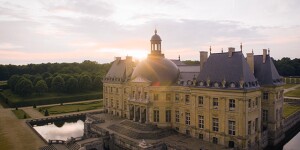
A s part of Sotheby's Modern British & Irish Art week, Sotheby’s will host a tightly-curated exhibition celebrating the very best of art and literature by the Bloomsbury group, with works for sale alongside loans from the collection at Charleston, the home of Vanessa Bell and Duncan Grant. The Bloomsbury group was a circle of intellectuals, including artists and writers who made an indelible mark on the trajectory of the arts in Britain in the 20th century, challenging conventions through their progressive ways of life. This autumn, Sotheby’s is pleased to present Radical Modernity: From Bloomsbury to Charleston, a private selling and loan exhibition in collaboration with Charleston. The exhibition will celebrate the indefatigable spirit of the Bloomsbury Group and the renewed interest in their work and lives today, across paintings, drawings, furniture, ceramics and literature by Vanessa Bell, Duncan Grant, Roger Fry, Virginia Woolf and Henry Lamb.
Though born in London’s Bloomsbury, the movement found its spiritual home at Charleston in Sussex. The home and studio of painters Vanessa Bell and Duncan Grant became the hub around which many of the early twentieth century’s greatest minds gravitated. Today, Charleston – which is set to celebrate half a century as a charity in 2030 – is the custodian of a world-leading Bloomsbury collection. As part of the exhibition, Charleston will be loaning some of its most significant pieces, many not usually on public view. This includes recent acquisitions made as part of Charleston’s ‘50 for 50’ campaign, a hunt for the very best Bloomsbury works still in private collections that marks the forthcoming 50th anniversary.
The cultural significance of the Bloomsbury group extends today to contemporary art, design and the world of fashion, with designers long captivated by these characters. Among them, Kim Jones OBE, has been a passionate ambassador of the Bloomsbury group, continuously finding fresh inspiration for his work with Dior and Fendi within not only the patterns and designs of the Bloomsbury group, but also within their writings. Appointed as Vice President of Charleston, Sotheby's welcomes Kim Jones to lend his eye for the curation of the galleries, as well as loaning pieces from his personal collection, one of the most significant in private hands.
Read Less
“I first went to Charleston when I was around 14, to go sketching in the garden, and I still have the brochure from that day. It was the centre of the Bloomsbury universe, down in Sussex, and it brought everyone together – and this sense of art connecting people is something that carries through even now.”
Location:
34–35 New Bond Street, London, W1A 2AA
Exhibition on View:
9–26 November 2024
Monday–Friday | 9:00 AM–4:30 PM
Saturday & Sunday | 12:00 PM–5:00 PM
Closed weekend of 16 & 17 November
Works in the Selling Exhibition
Works on Loan From Private Collections
Listen to Sotheby’s Talks Latest Episode
The Bloomsbury Legacy: Art, Life and the Charleston Aesthetic
In the newest episode of Sotheby’s Talks, Kim Jones, Dr Darren Clarke, Frances Wilson and Jen Hardie explore the Bloomsbury group and the unique aesthetic cultivated at Charleston, their rural retreat, which became a hub for creative collaboration and continues to inspire generations of artists and thinkers today.
Radical Modernity: From Bloomsbury to Charleston | A Sotheby's Collaboration
Select Group of Works on Loan From Charleston
Vanessa Bell and Duncan Grant lived and worked side by side from 1914 until she died in 1961. Although Bell was married when they met, the pair had become lovers shortly before moving to Charleston together with Bell’s two young sons and Grant’s lover, the writer David Garnett. It was a different interpretation of domesticity, but one that was accommodated at Charleston. Although the sexual element of their relationship didn’t endure, a lifelong platonic friendship and creative companionship prevailed. They had a daughter together, Angelica, who was born on Christmas Day at Charleston in 1918.

On loan, courtesy of The Charleston Trust
Acquisition supported by National Heritage Memorial Fund, Art Fund and Pilgrim Trust
© Estate of Duncan Grant. All rights reserved, DACS 2024
Born in Scotland in 1885, Grant spent the first nine years of his life in India, which had a lasting impact on his aesthetic. Using self-portraiture to experiment with self-identity, casting himself in many roles, his striking Self Portrait from 1909, rich with the influences, colours and traditions of Grant’s childhood is a highlight within the exhibition.

On loan, courtesy of The Charleston Trust
Acquired with the assistance of the National Heritage Memorial Fund, Art Fund and the ACE/V&A Purchase Grant Fund.
© Estate of Duncan Grant. All rights reserved, DACS 2024
Portraiture also gives insight into the overlapping relationships within their circle. John Maynard Keynes, one of the most influential economists of modern times, had a room at Charleston where he would stay at weekends. In this painting from 1917, Keynes, who was working in the Treasury at the time, is pictured sitting in Charleston’s walled garden, deeply engrossed in his writing, sporting an Omega Workshops cap. Grant and Keynes had been lovers eight years before and remained great friends for the rest of Keynes’ life.

On loan, courtesy of The Charleston Trust.
© Estate of Duncan Grant. All rights reserved, DACS 2024
The exhibition reflects the scope of Grant’s dynamic working practices, reflected in a log box that he playfully decorated for Charleston soon after moving in. Depicting an angelic musician or dancer on each side, Grant brings the spirit of London, as well as Europe, from Renaissance painting to the Ballet russe, to the rural fireside in Sussex. This act of making the mundane beautiful was something the Bloomsbury artists achieved throughout their lives.

On loan, courtesy of The Charleston Trust.
© Estate of Vanessa Bell. All rights reserved, DACS 2024
Bell’s affinity with portraiture is also be represented with a depiction of Grant’s aunt Lady Jane Strachey in 1923. An incredibly inspiring figure, Lady Strachey started campaigning for women to get the vote in the late 1860s. Mother to 13 children, she ensured all her daughters went to university, at a time when it was not commonplace. It was Lady Strachey who persuaded Grant’s parents to allow him to go to art school. This powerful portrait was last exhibited outside of the house in Dulwich Picture Gallery’s acclaimed retrospective in 2017.

On loan, courtesy of The Charleston Trust.
© Estate of Vanessa Bell. All rights reserved, DACS 2024
A further work depicts the kitchen at Charleston during the Second World War, circa 1943, much of which remains the same today. Bell captures the daily drudge of preparing food for the family from scratch, with Grace Higgens at the centre. Higgens joined Bell’s household in 1920, when she was 16, working as a nursemaid to Bell’s daughter. She later became housekeeper at Charleston, retiring fifty years later in 1970.
Read LessContacts




Charleston is a place that brings people together to engage with art and ideas. The modernist home and studio of the painters Vanessa Bell and Duncan Grant, Charleston was a gathering point for some of the 20th century’s most radical artists, writers and thinkers known collectively as the Bloomsbury group. It is where they came together to imagine society differently and has always been a place where art and experimental thinking are at the centre of everyday life. Today, Charleston has two locations - the house, garden and galleries at Firle and our new space in Lewes. Charleston presenta a dynamic year-round programme of exhibitions, events and festivals. They believe in the power of art, in all its forms, to provoke new ways of thinking and living.
Discover more at www.charleston.org.uk
